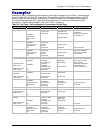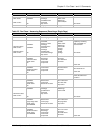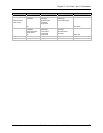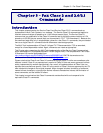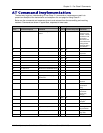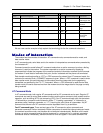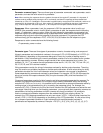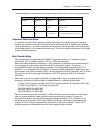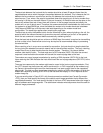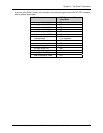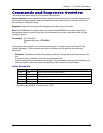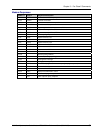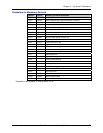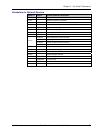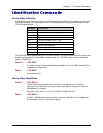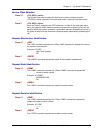
Chapter 3 – Fax Class 2 Commands
Multi-Tech Systems, Inc. SocketModem MT5634SMIxx Reference Guide (S000263C) 53
The baud rate between the host and the fax modem should be at least 20 percent faster than the
negotiated baud rate at which the page is transmitted between fax modems. This is because the link
between the fax modems is synchronous and the link between the host and the fax modem is
asynchronous. Thus, when a fax page is transmitted, fewer bits are going out of the fax modem than
are coming in (8 bits per character versus 10 bits per character). If the baud rates are the same or the
host-to-fax modem baud rate is less, there will be errors in the fax page, because periodically the
modem will run out of data to send. Therefore, the recommended baud rate between the host and the
fax modem is at least 38400 bps, since the fastest fax modem to fax modem baud rate is between
14400 bps and 28800 bps, with the exact rate used depending on the modem model and
configuration. The same logic applies when receiving fax page data.
The baud rate is set by the speed at which the dial command is given when originating a fax call, the
speed at which the answer command is given when manually answering a fax call, or the speed at
which the last command is received before automatically answering the call.
Since the baud rate should be set to a minimum of 38400 bps, flow control is required on transmitting
so that no data is lost. Receive flow control may be required to accommodate delays in processing
the received data.
When receiving a fax in a non-error-corrected fax connection, the host should not stop the data flow
for long (using the selected flow control means) lest its internal buffers overflow. The local, receiving
modem has no way to stop the data from the remote modem. Therefore, if its internal buffers
overflow, data loss will occur. The host must send a DC2 character (ASCII 12h) after the connect
response is received before the modem will transmit the received page data to the host.
The modem can cancel a page transmission by sending a CAN character (ASCII 18h) to the host.
Upon receiving the CAN character the host should send the end of page sequence (DLE-ETX) to the
modem.
There are two reasons why the modem might send a cancel to the host on page transmission: First,
the +FCT timeout may have occurred, which would result in a +FHS: response as the modem hung
up. Second, the modem might cancel the host because it has sent enough lines for the negotiated
page length. The host can also cancel page reception by sending a CAN to the modem, to which the
modem will respond by sending a DLE ETX to the host and then display a +FHS: response as the
modem hangs up.
If you are sending data in Class 2.0/2.1 with format conversions enabled (see Format Conversion
+FFC), then you must specify the format of the data for each image parameter that is different the
negotiated parameters. You must specify the data in the form of DLE sequences before the image is
sent or between each image segment. The table below indicates what sequences should be sent for
different image parameters.



